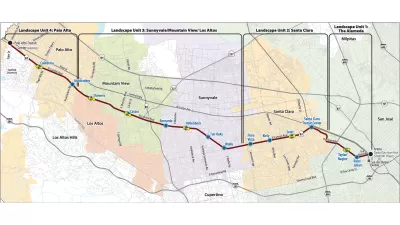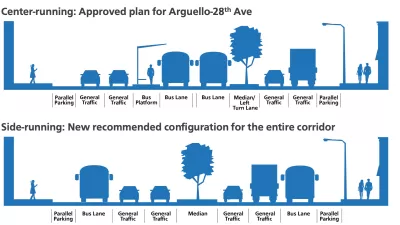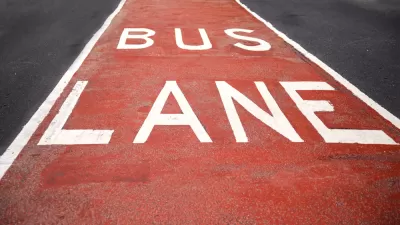Local politicians and the public had years to review a proposal that would create dedicated lanes for bus service along El Camino as it cuts through the region. The project found very little support.

"After years of spinning its wheels, the controversial proposal to build dedicated bus lanes along El Camino Real appears to be dead," reports Mark Noack.
Valley Transportation Authority announced that they are "pulling the plug" on the $223 million bus rapid transit proposal after receiving insufficient support from local politicians. The most recent setback was a letter written by Los Altos Councilmember Jeannie Bruins, who chairs the project's advisory committee. In December, the Sunnyvale City Council also rejected the proposal. The project provoked resistance from local politicians for years due to concerns over the project's effect on travel times and spillover into surrounding neighborhoods. The Santa Clara Valley Transportation Authority released a draft Environmental Impact Review for the project in late 2014.
"The original idea for Bus Rapid Transit called for an elaborate series of new bus stops and infrastructure that would dedicate two of El Camino's six traffic lanes primarily for bus traffic," explains Noack. "Once completed, the project would have streamlined bus service, potentially making it a viable transit option for more commuters."
According to planners, the bus rapid transit lane would have improved bus travel times by 40 minutes, though members of the public found that claim hard to believe.
FULL STORY: Plan for dedicated El Camino bus lanes fizzles out

Study: Maui’s Plan to Convert Vacation Rentals to Long-Term Housing Could Cause Nearly $1 Billion Economic Loss
The plan would reduce visitor accommodation by 25,% resulting in 1,900 jobs lost.

North Texas Transit Leaders Tout Benefits of TOD for Growing Region
At a summit focused on transit-oriented development, policymakers discussed how North Texas’ expanded light rail system can serve as a tool for economic growth.

Why Should We Subsidize Public Transportation?
Many public transit agencies face financial stress due to rising costs, declining fare revenue, and declining subsidies. Transit advocates must provide a strong business case for increasing public transit funding.

How to Make US Trains Faster
Changes to boarding platforms and a switch to electric trains could improve U.S. passenger rail service without the added cost of high-speed rail.

Columbia’s Revitalized ‘Loop’ Is a Hub for Local Entrepreneurs
A focus on small businesses is helping a commercial corridor in Columbia, Missouri thrive.

Invasive Insect Threatens Minnesota’s Ash Forests
The Emerald Ash Borer is a rapidly spreading invasive pest threatening Minnesota’s ash trees, and homeowners are encouraged to plant diverse replacement species, avoid moving ash firewood, and monitor for signs of infestation.
Urban Design for Planners 1: Software Tools
This six-course series explores essential urban design concepts using open source software and equips planners with the tools they need to participate fully in the urban design process.
Planning for Universal Design
Learn the tools for implementing Universal Design in planning regulations.
City of Santa Clarita
Ascent Environmental
Institute for Housing and Urban Development Studies (IHS)
City of Grandview
Harvard GSD Executive Education
Toledo-Lucas County Plan Commissions
Salt Lake City
NYU Wagner Graduate School of Public Service





























